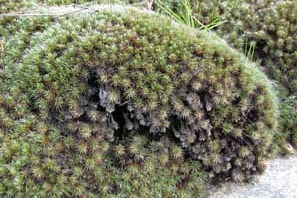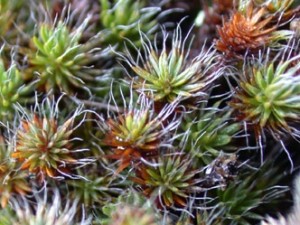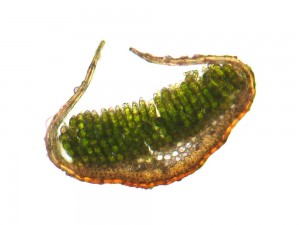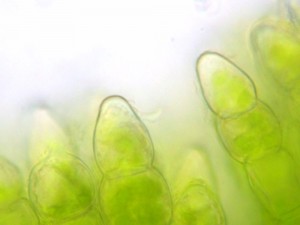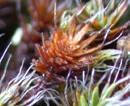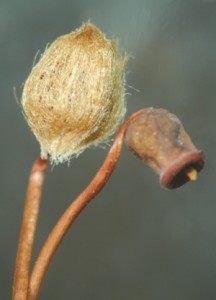Habitat
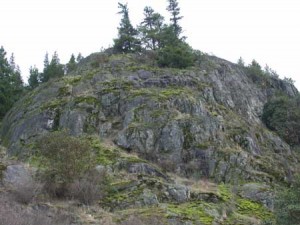 P. piliferum can commonly be found growing in sites that are open, dry and acidic, such as in shallow soil over outcrops, open sandy soils of banks or gravel cover, and disturbed areas (like on roadsides or rocks). This species can tolerate high temperatures and dry conditions in its environment. Furthermore, they are good indicators of nutrient-poor soil.
P. piliferum can commonly be found growing in sites that are open, dry and acidic, such as in shallow soil over outcrops, open sandy soils of banks or gravel cover, and disturbed areas (like on roadsides or rocks). This species can tolerate high temperatures and dry conditions in its environment. Furthermore, they are good indicators of nutrient-poor soil.
Gametophyte
Overall structure:
This species is an acrocarpous moss and they often form short turfs which appear bluish-green to grayish in color. The stems and sometimes the whole plant (with the exception of the leaves’ white awn) can be tinged red.
Leaf Structure:
The leaves are quite distinct in that they have a very long white hair point, which is what can give this species a gray tinge.
A closer look at the leaf reveals that the blades are in-curved over the lamellae.
As seen in this picture, the uppermost cells of the lamellae are smooth.
Male gametophyte:
It is worth nothing the cup-shaped whorl at the apex of the male gametophyte (this is where the antheridia are located). This morphology serves as a splash-cup mechanism for dispersing sperm.
Sporophyte
The sporophytic generation of this species occurs frequently, however it reaches maturity in the summer. The mature sporophytes are red-brown in color and have a hairy calyptra.

